Feline Developmental Stages
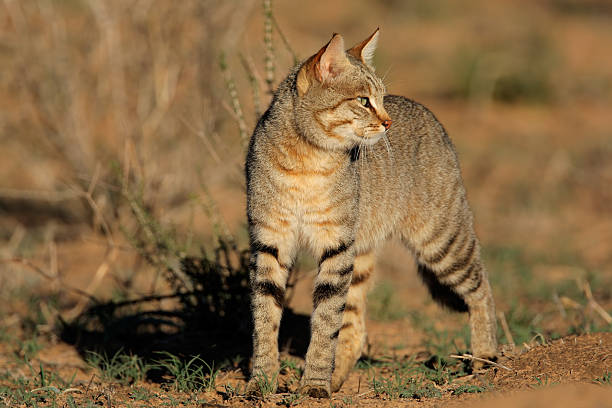
In order to understand your cat’s behavior it can be helpful to know the social development stages kittens go through as they grow. Evolutionarily cats come from solitary predators. The closest living ancestors is the African Wildcat, Felis silvestris lybica. As you can see from the photos (right) they look just like your average gray tabby, however I don’t think you would have too much luck petting one of these! As cats became domesticated, they had to adapt to denser populations and that is where they adapted to more complex social structure. Dogs were originally social hunters and because of this have body language and facial expressions that are more easily readable. Cats, on the other hand, do not have as many social body language cues. This has given the false impression that cats don’t care for or need any social interaction. Modern domestic cats are “socially flexible” meaning that they can either remain solitary hunters or learn to function in a group. During their growth and development, all kittens need to go through the domestication process with exposure to handling by humans. This is why there is a range of cats all the way from solitary feral cats who are completely wild and survive on their own as well as feral cats living in groups to sweet and tame kitties living in complete cooperation with humans.
While all cats develop at their own rate, there are 8 feline social developmental stages.
Fetal Stage
The first stage is Fetal which is prior to birth. The health of the mother during gestation can affect the development of kittens. For example, a mother cat who is exposed to stress or does not have adequate nutrition can have kittens with lifelong both behavioral and physical issues. Certain infections and illness in the prenatal mother can also affect the kittens.
Neonatal
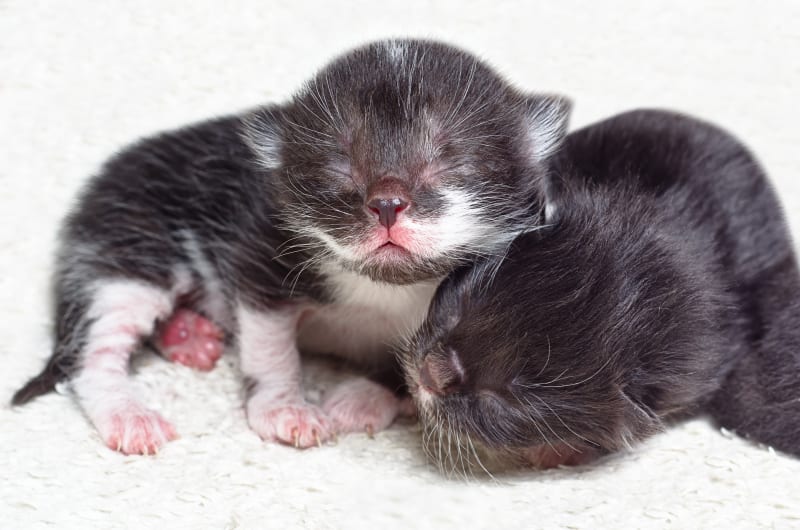
This Stage is from birth to about 10 days old. Kittens are born with their eyes closed and have limited hearing, however they do have a sense of touch, smell, and taste. They are very much dependent on the mother cat for food, elimination, as well as warmth and protection. Good nutrition and reduced stress for the mother also affects the kittens at this stage. Socialization can begin with short periods of gentle handling, although this does not affect their acceptance of humans, it can help them to develop resilience.
Transitional
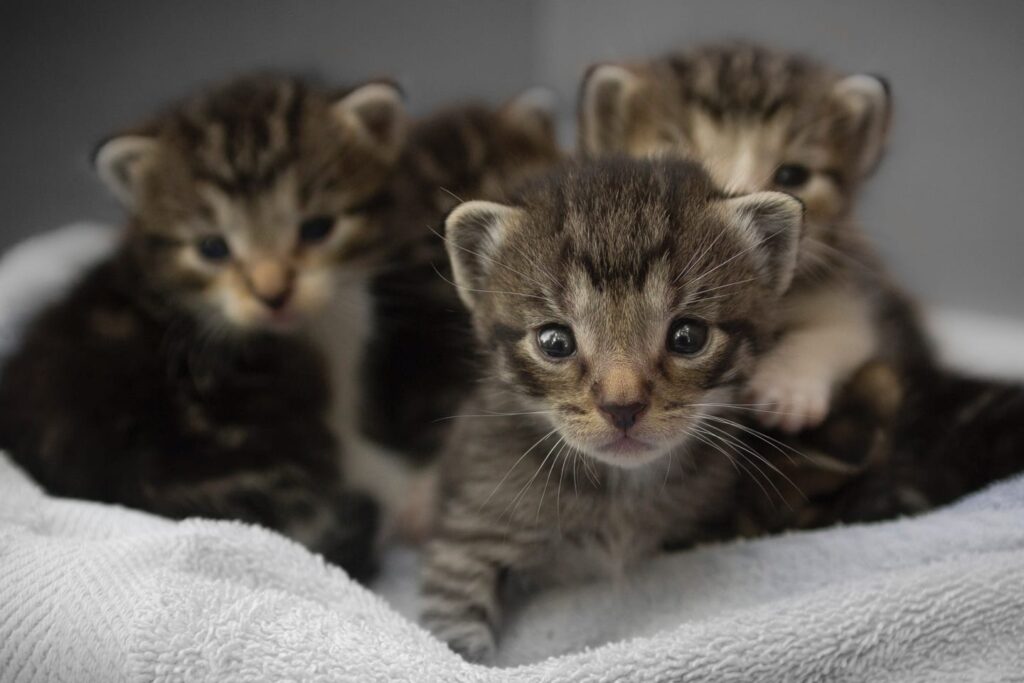
From about 10 days to 3 weeks is the transitional stage. During this time the kittens develop more mobility and sensory input ability. Physical milestones also begin during this stage, such as eyes opening, teeth erupting and beginning to walk. Exposure to different sights, sounds, and situations can affect the kittens throughout their lifetime.
Socialization
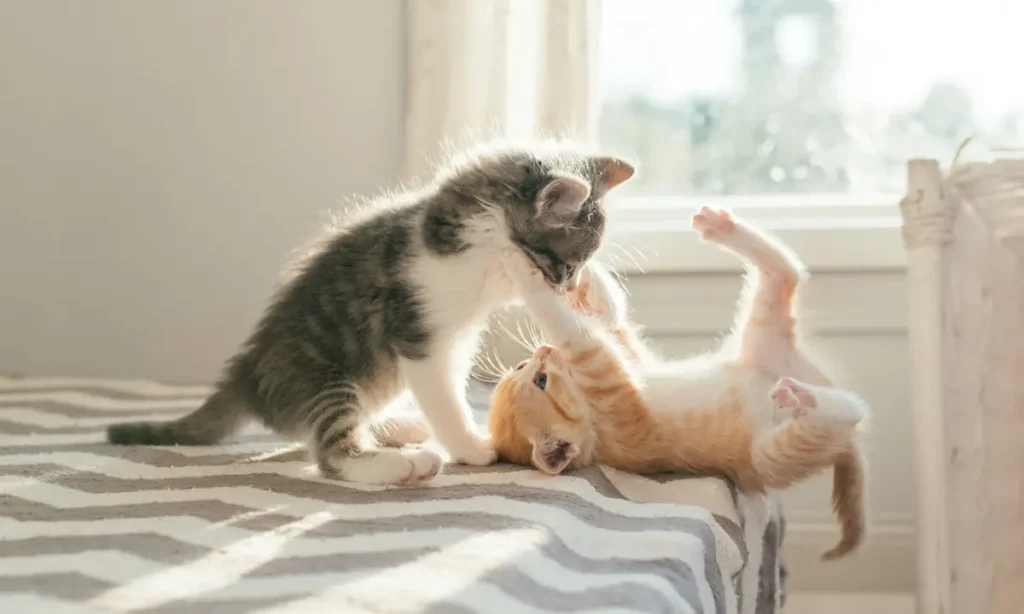
This stage is from about 2 weeks until about 7-10 weeks of age. This is the most important time for a kitten to be exposed to a variety of new experiences. A kitten’s fear of novelty is shut off at this point allowing the kitten to have more curiosity about the environment it is growing up in. They essentially learn what is “normal” for their situation. This is the time to set up positive social interaction with humans, other cats and other animals. Cats who have socialization to other cats, at this point will become more likely to accept cat companions in adulthood. Gentle handling of all a kitten’s body parts (paws, tail, belly, toes) will help with future handling and grooming. Gentle exposure to situations such as wearing a harness, car rides, carriers, nail clipping, and tooth brushing are more readily accepted at this stage. Providing a variety of toys can also help to simulate a kitten’s mind at this point.
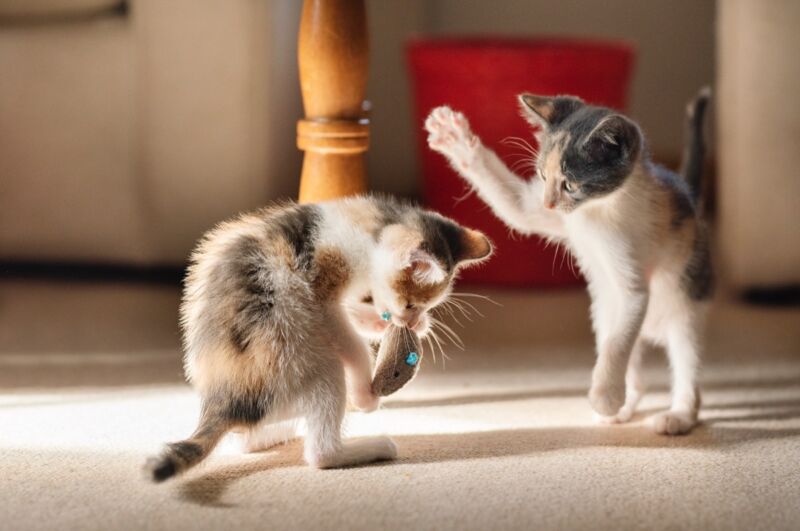
However, it is important to know that even a single traumatic experience during this phase can cause a lifelong fear. Therefore it is important for all the interactions to be paired with positive reinforcement and care should be taken to avoid stressful situations.
It is vitally important for kittens to remain with their litter during this time. Play with littermates helps kittens develop behaviorally. Problems such as excessive timidity, fear, and aggression can develop if removed from the litter too early.
Kittens will also begin to eliminate without their mother’s help at about 4 weeks. Not all mother cats will “teach” their kittens to use a litter box, but exposure to a litter box to explore will assist kittens in following their natural instincts to cover their wastes. Clumping or absorbent litters should be avoided because of the possibility of ingestion.
Typically, kittens will also begin to eat solid food at this point and will be fully weaned by 7 to 10 weeks. What a kitten is fed at this time will affect future tastes, so now is a great time to introduce a variety of flavors and textures to avoid a picky eater in the future.
Juvenile
At about 8 weeks kittens will begin to have a fear response to novel stimuli. This Juvenile stage lasts for about 4-10 months and is characterized by a reduction in the playful kitten behavior and does include a period of avoidance to humans, even in the most socialized kittens. In the wild cats will begin to hunt on their own during this time and toys which can mimic the hunting sequence (stalk, chase, pounce) are important. It is still important to expose kittens to new experiences as this can set the tone for being able to handle changes throughout their lifetime.
Adolescent
A cat will remain in the adolescent stage from between 4-10 months until 2-4 years. This is the period when a wild cat begins to go off on its own or to leave a feral cat colony, therefore, mental stimulation and environmental enrichment are important in keeping a young cat occupied and in preventing unwanted behaviors out of boredom. A variety of toys, scratch posts, cat trees, as well as training can help to keep cats mentally stimulated and entertained.
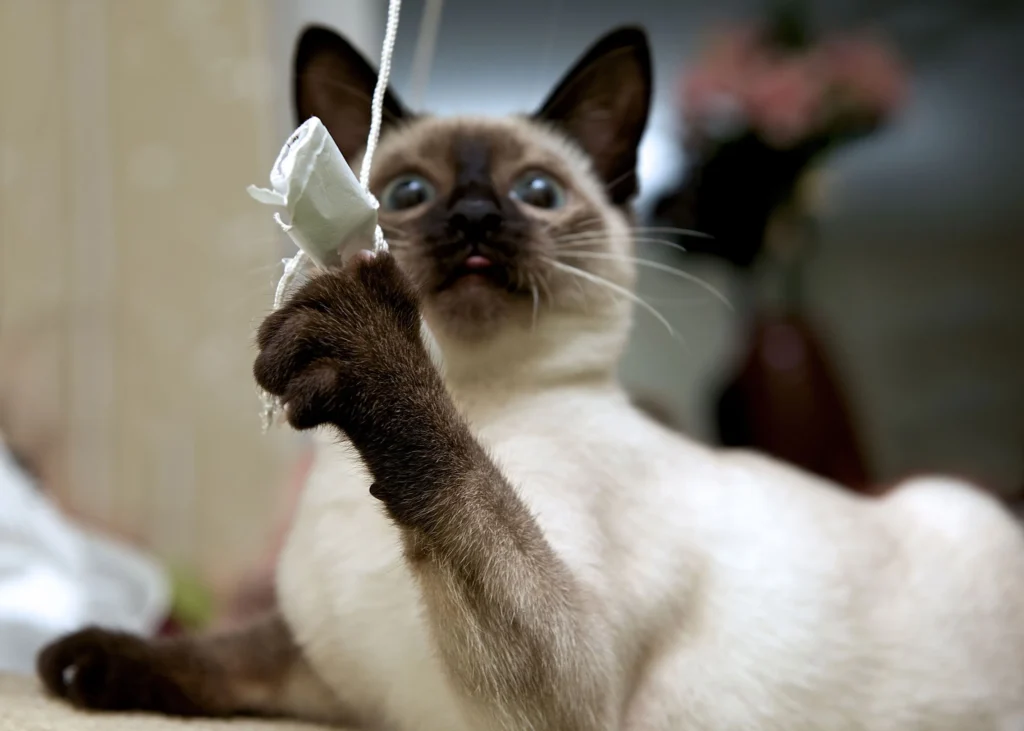
During this stage, and throughout adult life, care needs to be taken in introducing new cats as now they become less accepting of new additions.
Adult
Cats reach social maturity between 2-4 years. Behaviors toward other household animals, including humans, may change and need to be adjusted to. Mental stimulation in the form of toy variety, games, and cat furniture, as well as social connection is important for a healthy happy cat.
Senior
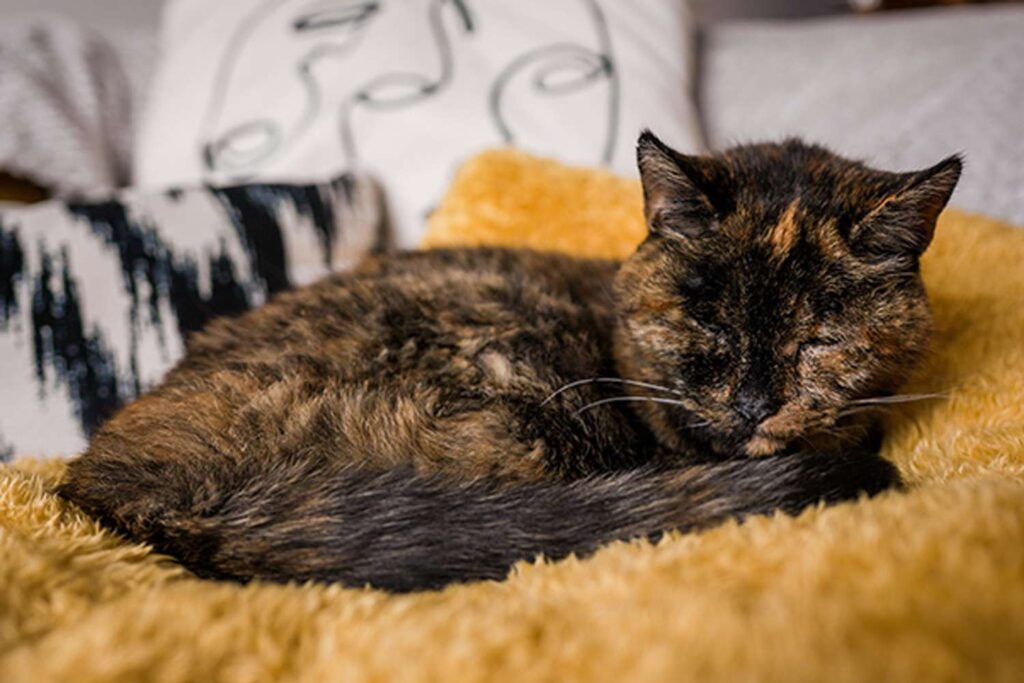
Over 12 years cats are considered geriatric. Cats of this age still require attention and mental stimulation although physically they may begin to slow down. Attention to physical health is important in catching illness early. Because cats are prey animals, as well as predators, they don’t readily show signs of distress or illness and may be difficult to spot early signs of illness in. Behavioral changes such as not using the litter box suddenly can be an indication of an illness.
Knowing what is normal behavior and development in cats can help you to understand how to provide your cat with what it needs for a happy and healthy life with you.
